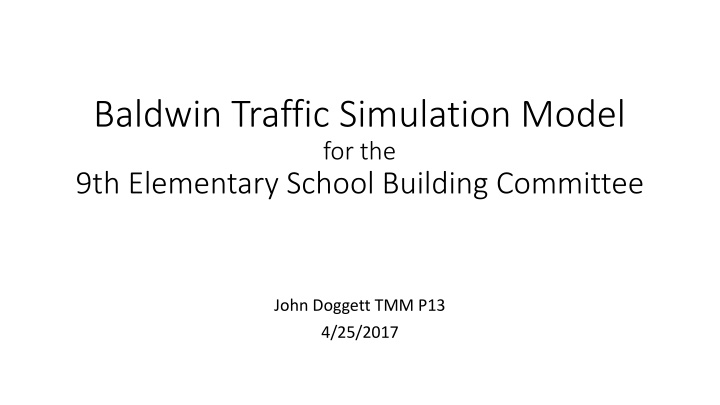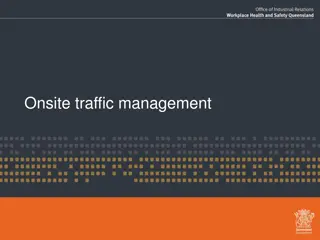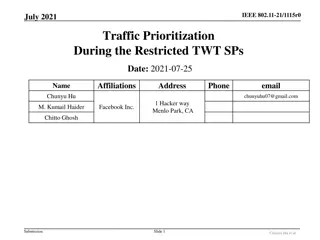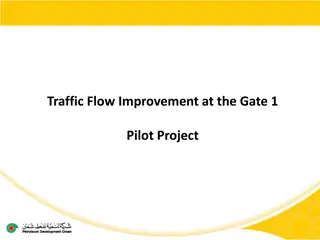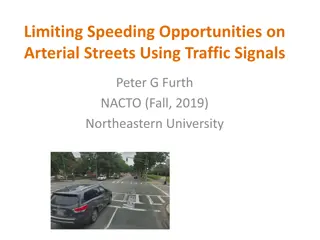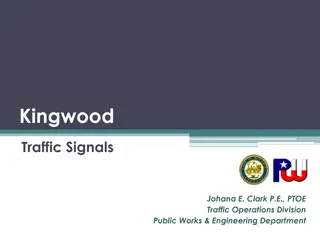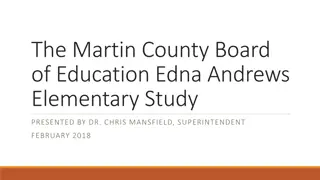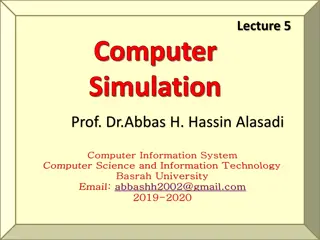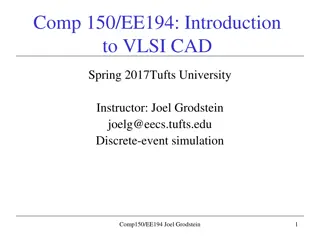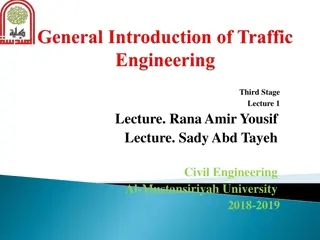Baldwin Traffic Simulation Model for 9th Elementary School
This simulation model focuses on analyzing the impact of traffic on student arrival at the 9th Elementary School. It evaluates traffic patterns, drop-off designs, and the overall efficiency of the transportation system. Key assumptions and model runs are visualized to assess the effectiveness of the current setup and propose potential improvements for smoother traffic flow.
Download Presentation

Please find below an Image/Link to download the presentation.
The content on the website is provided AS IS for your information and personal use only. It may not be sold, licensed, or shared on other websites without obtaining consent from the author.If you encounter any issues during the download, it is possible that the publisher has removed the file from their server.
You are allowed to download the files provided on this website for personal or commercial use, subject to the condition that they are used lawfully. All files are the property of their respective owners.
The content on the website is provided AS IS for your information and personal use only. It may not be sold, licensed, or shared on other websites without obtaining consent from the author.
E N D
Presentation Transcript
Baldwin Traffic Simulation Model for the 9th Elementary School Building Committee John Doggett TMM P13 4/25/2017
Three Questions How does the traffic affect getting the students to school? How does the school traffic affect the neighborhood? Does the drop-off design work effectively?
Simulation Model Route 9 Parking Lot Heath St Soule Woodland Hammond St Horace James Circle Peak hour: 7:15am 8:15am with 15 minute traffic variations and recommended traffic signal phasing
Key Assumptions 252 Student Trips: 88 Staff Trips: 69% from South 10% from East 15% from West 6% from North 15% from South 60% from East 13% from West 12% from North
Does the drop-off design work effectively? Initial design Option A Option B Drop-off Zones Drop-off Zones Drop-off Zones
Model: Annotated Screen Shot Heath Student Aqua Baldwin Drop-off Staff Red General Traffic Purple Hammond Street School Buses Yellow Woodland Road Woodland Student White Drop-off
Model Runs 1. Parking Lot and Drop-off 2. Horace James Circle
Model Runs 1. Parking Lot and Drop-off 2. Horace James Circle
Model Run Results 1. Driscoll drop-off observation 2. Baldwin parents emulate Driscoll 3. Baldwin parents adjust for traffic conditions 4. Driscoll drop-off compared to potential Baldwin drop-off
Driscoll Arrival Distribution Observation 81 Vehicles (~117 Students) 25 20 15 10 5 0 7:20 7:25 7:30 7:35 7:40 7:45 7:50 7:55 8:00 8:05 8:10 8:15 22% 77% 1% 26 Students 90 Students 1 Student
Baldwin Parents Follow Driscoll Arrival Distribution: Vehicle Arrival in 5 minute Intervals 90 80 Baldwin Driscoll 70 60 50 40 30 20 10 0 7:20 7:25 7:30 7:35 7:40 7:45 7:50 7:55 8:00 8:05 8:10 45% 8:15 8:20+ 17% 38% 64 Students 164 Students 138 Students
Baldwin Arrival Distribution to get all Students to School on Time 252 Vehicles (365 Students) 60 50 40 30 20 10 0 7:20 7:25 7:30 68% 7:35 7:40 7:45 7:50 7:55 8:00 8:05 8:10 0% 8:15 32% 247 Students 0 Students 119 Students
To Get Students to School: Baldwin Arrivals need to arrive 20-30 Minutes prior to Driscoll 60 Baldwin Driscoll 50 40 30 20 10 0 7:20 7:25 7:30 7:35 7:40 7:45 7:50 7:55 8:00 8:05 8:10 8:15
Model Result Observations Parking drop-off design B can handle 10+ vehicles a minute 8 drop-off (30ft) slots for vehicles on Heath St add capacity and temporary parking Temporary parking issue needs more discussion and modeling Traffic: Retiming of lights and improved drop-off design resulted in reasonable queues in Hammond, Heath and Woodland Horace James Circle is a gating factor Many students will have to arrive 20-30 mins earlier than would be normally expected for other Brookline schools Accommodation/Programs need to be considered for 250+ students who arrive early
